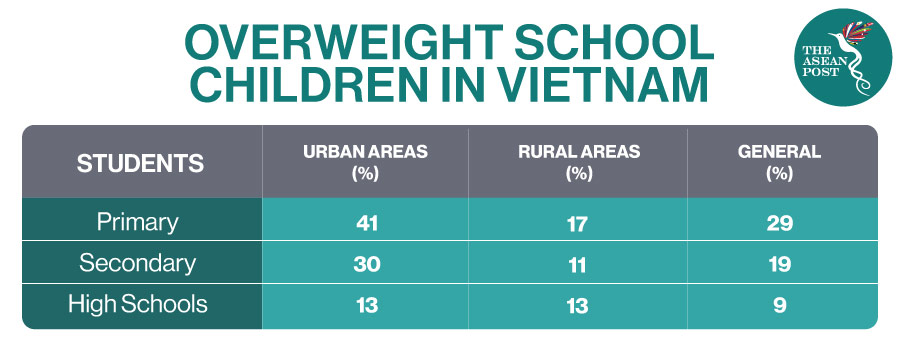Children around the world are not getting the nutrients they need, undermining their capacity to grow, develop and learn to their full potential. Unfortunately, the economic impact of COVID-19 is threatening to further undermine efforts to improve diets and nutrition of nearly two billion people in Asia and the Pacific who were already unable to afford healthy diets prior to the pandemic.
According to the State of the World’s Children 2019: children, food and nutrition’ report by the United Nations Children’s Fund (UNICEF), one in three children under five is not properly growing due to malnutrition.
The triple burden of malnutrition – undernutrition, hidden hunger and overweight – threaten the survival, growth and development of children, as well as economies and nations.
Childhood Obesity
In Vietnam, childhood obesity was not a problem before 1995. The 2016 ‘Global health observatory data repository,’ study by the World Health Organization (WHO), showed that Vietnam has the lowest prevalence of overweight youth (2.6 percent) compared to other ASEAN member states.
Vietnam also boasts of having among the healthiest and most balanced meals in the world, where some dishes serve all the needed requirements of protein and vitamins.
Nevertheless, Vietnam’s economy and globalisation have changed the eating habits of its people. The rising affluence in Vietnam has encouraged the consumption of highly processed foods that are enriched with artificial flavourings, sugar and other chemicals. Combined with a sedentary lifestyle, it is only natural that Vietnamese children now face a growing prospect of obesity.
Between 2010 and 2014, Vietnam’s number of obese individuals rose by 38 percent.
A study by the National Institute of Nutrition (NIN) found that 29 percent of primary school students are overweight and obese, while the rate of overweight students in secondary schools and high schools are 19 percent and 9.5 percent, respectively. The incidence of overweight and obesity is higher in urban children (42 percent) than in children in rural areas (35 percent).
Vietnamese are consuming more meat than vegetables. Over the past 30 years, meat consumption by an average Vietnamese has increased by six times to nearly 100 grams (g) a day. Children are also replacing grains, fruits and vegetables for more convenient high-sugar, high-calorie fast foods. NIN’s study found that overweight children consume more protein-rich food and sweet products.

Another contributor to increased obesity rates among children is what is known as high screen time. Parents are mixing screen time with mealtime to keep their children seated while eating. Experts say that this trend would have long-term health effects, including damage to the mental development of Vietnam’s youth.
Dr Pham Minh Triet, a former head of the psychology department at the Children’s Hospital 1 in Ho Chi Minh City, said that studies have linked watching television during meals to obesity, which can lead to health issues such as type 2 diabetes, high blood pressure, and heart disease.
Children Are Malnourished
Despite considerable strides in national health care in recent decades, as many as 1.9 million young children are malnourished because of improper care, said Truong Tuyet Mai, head of the NIN.
“While Vietnam has made good progress in reducing its rate of undernutrition in recent decades, chronic malnutrition or stunting remains unacceptably high, and there is a risk that rates of overweight will rise,” said Rana Flowers, the UNICEF Representative in Vietnam.
Malnutrition is highest among secondary students (13 percent), followed closely by high school and primary children with 12 percent and 7.5 percent, respectively. Malnutrition and obesity increase the risks of chronic diseases like diabetes, high blood pressure and coronary artery disease.
Intervention programmes are needed to prevent malnutrition among rural children while appropriate diets and physical activities are essential to encourage healthy living among urban children. Nutrition education can also empower families and children to make healthier life choices.
Vietnam aims to reduce its childhood malnutrition and stunting rate to less than 20 percent and obesity rate among children, to less than 12 percent by 2025.
Related Articles:
